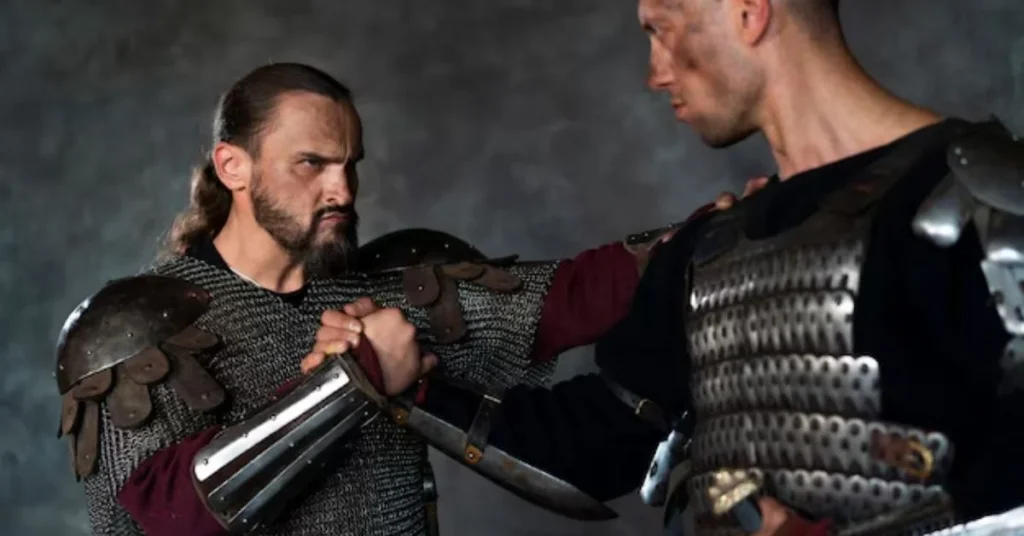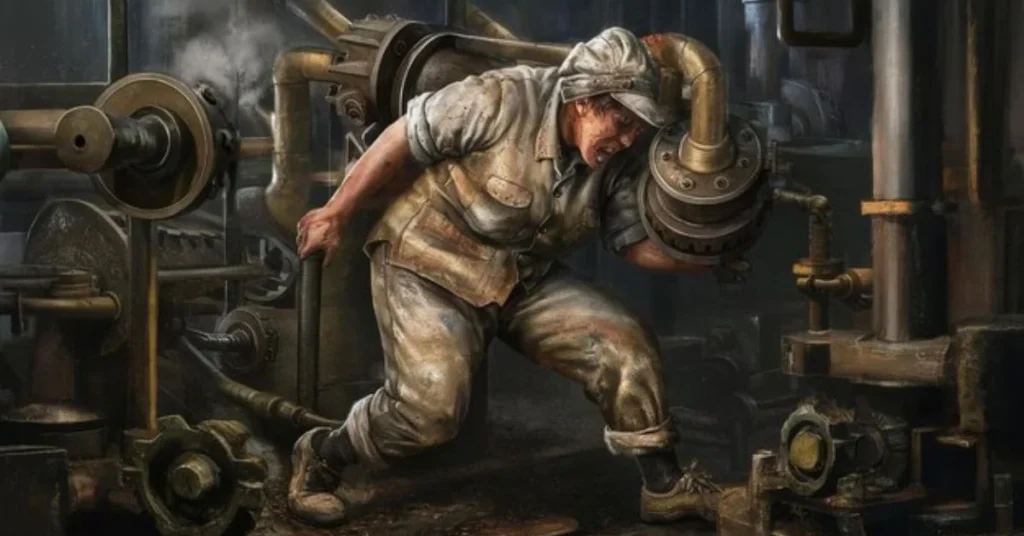
The Soviet hip-firing technique is a distinctive method of shooting that gained attention during the Cold War era. Unlike the conventional aiming methods used by modern militaries, this technique focused on firing a weapon from the hip, allowing for rapid shots while maintaining mobility. Although it might seem unconventional by today’s standards, the Soviet military adopted this method for specific combat situations. In this post, we will delve into the history, development, and application of the Soviet hip firing technique, exploring why it was used and its impact on military training.
What is the Soviet Hip-Firing Technique?
The Soviet hip-firing technique refers to a style of shooting where soldiers fire their rifles or submachine guns from the hip instead of aiming down the sights. This method allows for quick bursts of fire, particularly in close-quarters combat. It involves holding the weapon at hip level and using the body’s movement to direct the shots toward the target area. This technique requires practice to achieve accuracy but offers advantages in specific combat scenarios where speed is more crucial than precision.
Must read Fintech vs Tech Enabled: Understanding the Key Differences
1. Origins of the Soviet Hip-Firing Technique
- The method originated during World War II when the Soviet Red Army faced intense battles in urban areas and dense forests. These environments required rapid responses and the ability to fire quickly without taking the time to aim carefully.
- It became especially popular during the Cold War, as the Soviet military developed strategies to train large numbers of soldiers quickly, emphasizing skills that could be easily mastered in a short time.
2. How It Works
- The technique involves holding the weapon against the hip or slightly away from the body, using the hands and torso to guide the direction of fire.
- Soldiers were taught to maintain a steady stance and use their whole body to direct the weapon’s muzzle toward the target. This allowed for bursts of fire that could cover a wide area.
- The emphasis was on keeping a low profile and maintaining mobility, making it easier for soldiers to move through urban battlefields while engaging enemies.
Why Did the Soviets Use the Hip-Firing Technique?
Understanding why the Soviet hip-firing technique was developed helps to appreciate its unique place in military history. Here are some key reasons behind its use:
1. Speed Over Precision
- In the chaos of urban warfare, precision is often secondary to speed. Soviet soldiers faced enemies at close range in places like Stalingrad, where taking time to aim could mean losing crucial seconds. Hip firing allowed them to react swiftly and suppress enemy positions quickly.
- This method was particularly useful with weapons like the PPSh-41, a submachine gun with a high rate of fire that could be controlled effectively at close distances without aiming.

2. Ease of Training
- Training thousands of soldiers quickly was a priority for the Soviet Union, especially during World War II. Teaching recruits to fire from the hip was simpler and faster compared to traditional aiming techniques.
- This approach enabled the Soviet military to prepare large groups of soldiers for combat, even if they had little time for advanced training.
3. Suitable for Specific Weapons
- The Soviet hip firing technique was compatible with certain Soviet weapons, such as the aforementioned PPSh-41 and later the AK-47. These firearms had large magazines and were designed to be reliable under harsh conditions, making them suitable for rapid, close-range shooting.
- With these weapons, soldiers could maintain a steady stream of fire even without precise aiming, relying on volume of fire to suppress enemies.
How the Soviet Hip-Firing Technique Influenced Military Tactics
The Soviet hip firing technique not only shaped the tactics of the Soviet army but also influenced military strategies in other countries. While it is less common in modern military training, its principles still hold some value for certain scenarios.
1. Close-Quarters Combat (CQC)
- The technique was a precursor to many modern CQC strategies, where quick reaction time is critical. Even though modern militaries often prefer aiming down sights, the idea of engaging targets quickly without fully aiming still holds relevance.
- Some tactical training for special forces includes drills that emphasize shooting without aiming for split-second engagements, a concept reminiscent of the Soviet approach.
2. Psychological Impact
- The sight and sound of rapid, uncontrolled fire could have a psychological impact on enemies, causing them to take cover or retreat. This was particularly useful in close-range encounters where suppressing the enemy was as important as hitting them.
- This tactic helped the Soviet troops gain a psychological edge over opponents in intense urban environments.
3. Training Manuals and Legacy
- The Soviet hip-firing technique found its way into military manuals and training programs not only in the Soviet Union but also in allied countries. This helped to spread the method to various parts of the world.
- Today, it is considered a part of military history, with some modern shooting enthusiasts exploring the technique as part of historical reenactments or tactical sports.

The Decline of the Soviet Hip-Firing Technique
As warfare evolved, so did the tools and strategies used by militaries. The Soviet hip firing technique gradually fell out of favor, but why did this happen?
1. Advancements in Weaponry
- Modern firearms are more accurate and easier to control than older models, making it more practical to aim down sights, even in close quarters. Technologies like red dot sights allow soldiers to aim quickly without sacrificing accuracy.
- These advancements made the hip-firing technique less necessary, as soldiers could now maintain a rapid rate of fire with greater precision.
2. Emphasis on Accuracy
- Modern military doctrine places a greater emphasis on hitting targets accurately to conserve ammunition and reduce collateral damage. This focus on accuracy has made techniques like hip firing less common in training programs.
- While hip firing is still sometimes taught as a last-resort skill, it is not the primary method taught in most military training today.
3. Shifting Combat Scenarios
- As combat environments have changed, the need for techniques like hip firing has diminished. In open terrain and longer-distance engagements, precision is key, and soldiers rely on rifles with scopes or other aiming aids.
- However, the legacy of the Soviet hip-firing technique lives on in historical discussions and remains a point of interest for military historians and enthusiasts.
Conclusion
The Soviet hip-firing technique is a fascinating chapter in military history, showcasing how necessity shaped unique combat methods. Although it may not be as prevalent in modern warfare, the technique highlights the adaptability of soldiers in challenging environments. It served its purpose during an era when rapid response and mobility were crucial, offering a way for soldiers to survive in the most intense battlefields. Today, it remains a subject of study and curiosity for those interested in military tactics and history.
As warfare continues to evolve, the lessons from the past, like the Soviet hip-firing technique, remind us that even unconventional methods have their time and place. Understanding this technique helps to appreciate the strategic decisions made during one of history’s most turbulent periods and provides insight into the ever-changing world of military tactics. Click here
By learning about the Soviet hip firing technique, we gain a deeper understanding of the strategies that shaped historic battles and how they continue to influence military thinking today.

What is the Soviet hip-firing technique?
The Soviet hip firing technique is a method where soldiers fire from the hip without using the weapon’s sights, allowing for quick bursts of fire, especially in close combat.
Why did the Soviets use hip firing during World War II?
Soviet soldiers used hip firing for its speed and effectiveness in close-quarters combat, where aiming down sights was less practical in fast-moving scenarios.
Is the Soviet hip firing technique still used today?
While it is not commonly used in modern military training, the concept of firing quickly without fully aiming is sometimes applied in specialized tactical training.
Which weapons were suitable for the Soviet hip firing technique?
Weapons like the PPSh-41 submachine gun and the AK-47 were well-suited for this technique due to their high rates of fire and large magazines.
How does the Soviet hip firing technique differ from traditional aiming?
Traditional aiming focuses on using sights for precision, while the hip-firing technique sacrifices accuracy for speed, making it ideal for close combat situations.





